Ski Mountaineering: Gear List & Tips to Get Started
You’re a proficient backcountry skier, with experience in snow safety, rescue techniques, and the etiquette needed to travel through avalanche terrain—but now you seek to climb the peaks that surround your current lines. Here in the Northwest, “volcano season” has arrived. With a more consolidated snow pack, spring is a great time of year to try a new activity in the mountains. Graduating from ski touring to ski mountaineering requires additional gear and skills. In addition to your beacon, shovel, probe, here’s a quick look at what else you’ll need and why.
8 Critical Pieces of Ski Mountaineering Gear
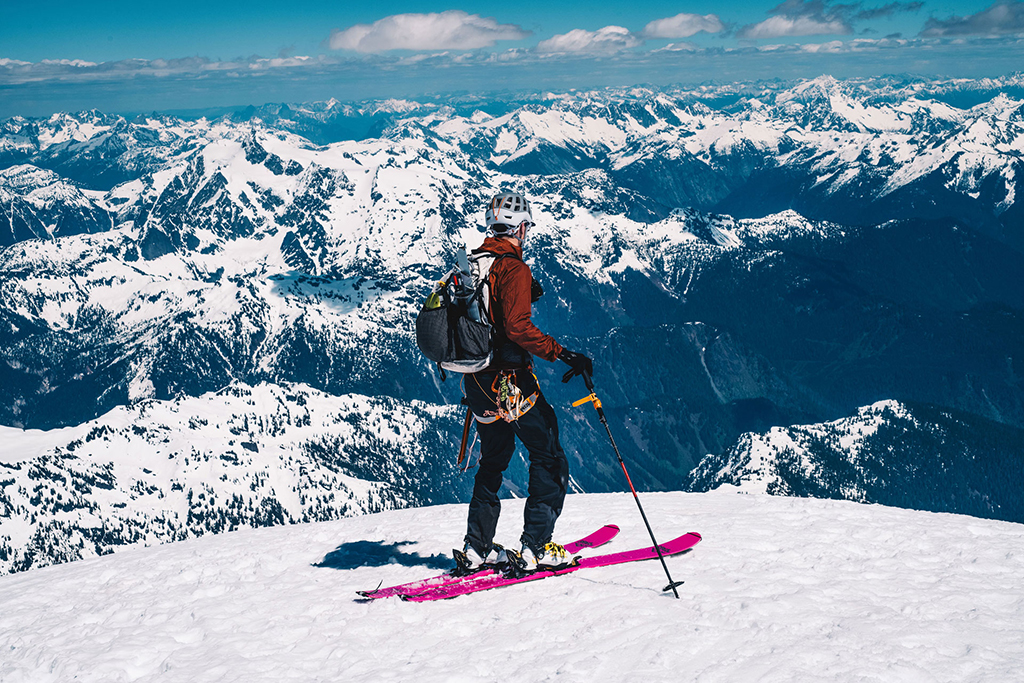
1. Lightweight Ski Touring Setup
With bigger objectives come longer approaches. This means full days spent in ski boots, skinning and boot packing for hours—the lighter your kit, the better. Many opt for an even narrower ski and ultra-lightweight touring bindings to shed weight where they can. Fortunately, the ski industry is creating some incredible new technology that is light without sacrificing safety or your ability to charge down the mountain.
Touring boots are an investment that will last for years and the right ones make it easier to climb in the challenging conditions of the alpine. Proper ski mountaineering boots feature lugged and grippy soles for travel on rock and ice. Work with a boot fitter to get a boot matched to your foot, and to mold custom insoles. You’ll want your boots as comfortable as possible.
The key takeaway: Don’t skimp on boots.
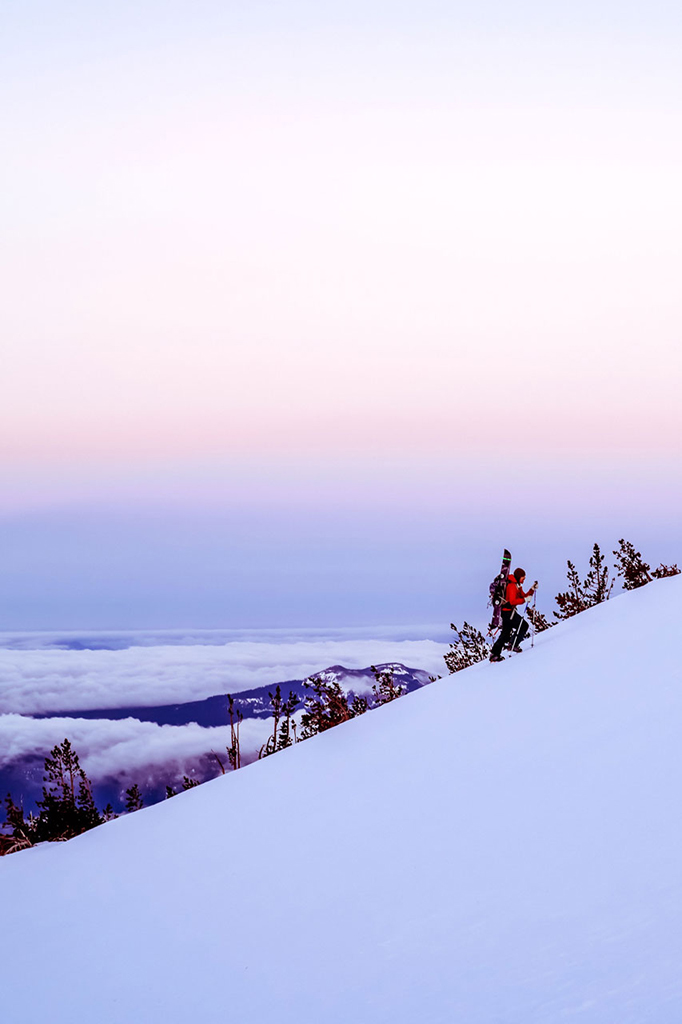
2. Ski and Boot Crampons
Ski crampons are a must for alpine starts. The ground is still often rock-solid when your tours begin before the sun rises. Ski crampons enable you to travel on firm and icy conditions where your skins would otherwise begin to slide.
When steepness of the slope exceeds what your skis can take you up, or when downclimbing is necessary, boot crampons become essential. Often, you cannot skin to the top of a peak. Boot crampons become your tools for safety and summit success.
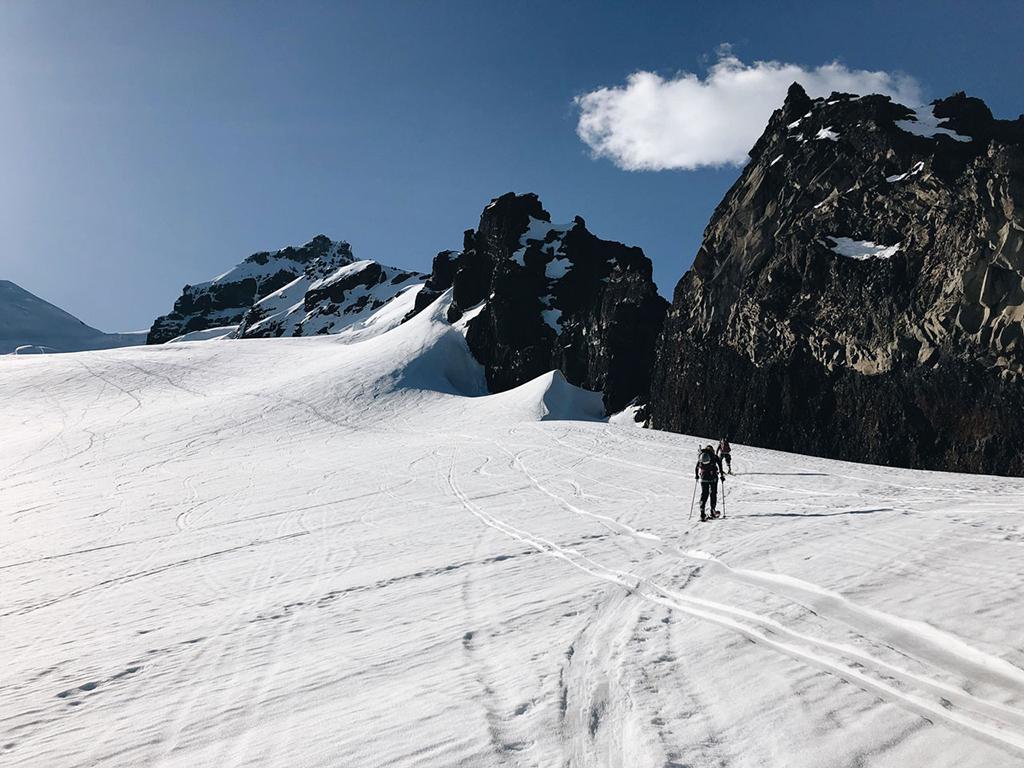
3. Ice Axe
You’ll need an ice axe that is lightweight and sized correctly. An ice axe that is too heavy or too long will not fit well on your pack and can become cumbersome on steep boot packs. You’ll also need to learn how to use your ice axe properly for self-arresting should you or someone in your rope team fall.
4. Harness
Again, the lighter the better, but as long as your harness performs as it should, it’ll do. Adjustable leg loops are preferred so you can put your harness on right over your ski boots. If it doesn’t fit over your boots, you may wear your harness from the beginning of your tour, that way you don’t have to stop and take off your ski boots before roping up for glacier travel.
5. Glacier Travel Rope
A rope with a dry treatment is a must for performance and durability in cold and wet conditions. There are numerous sizes and types of ropes out there for ski mountaineering use. The rope you buy will depend on the types of objectives you are trying to accomplish, number of climbers in your party, and personal preferences.
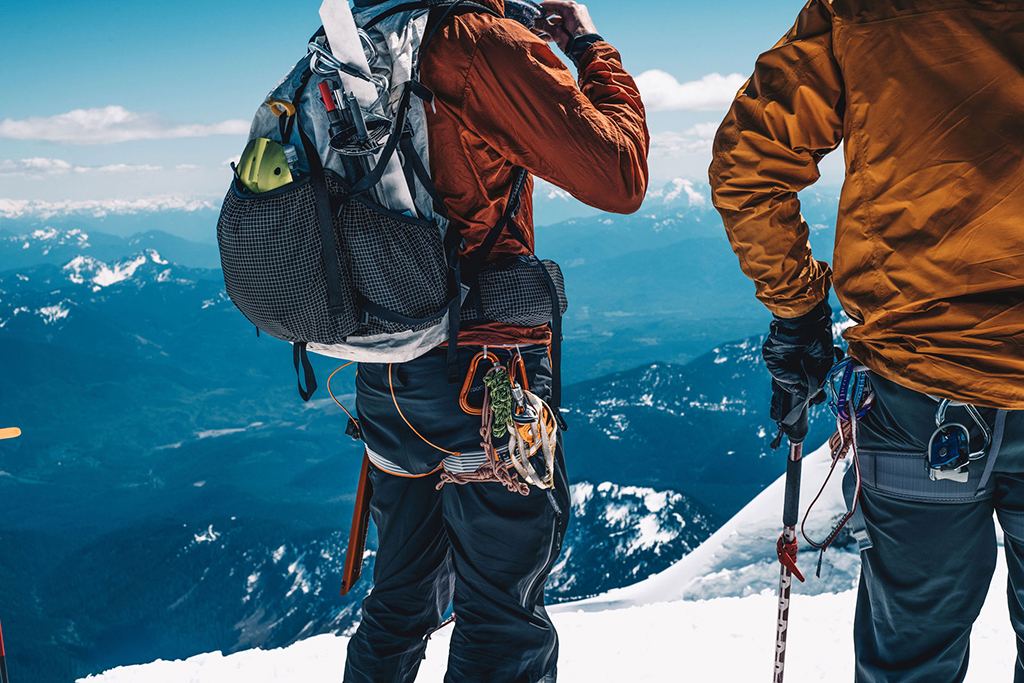
6. Crevasse Rescue Equipment
Any time you are traveling on glaciers, you and your partners should be comfortable with roping up and with crevasse rescue techniques. There are many different ways to build your crevasse rescue kit. This can and will vary based on what system you buy, learn to use, prefer, or gear you might already have. The Petzl RAD System is designed for ski specific mountaineering missions, with a lightweight and modern approach. However, if you are looking to go with a traditional crevasse rescue system the Alpine Institute offers a great starter kit.
7. Lightweight Helmet
A helmet that offers a little side protection is a great idea if buying new. But if you are a climber with a classic helmet that only focuses on protecting the top of your head, it will work as well. However, when considering glacier travel and thrilling ski descents, a little more protection can’t hurt!
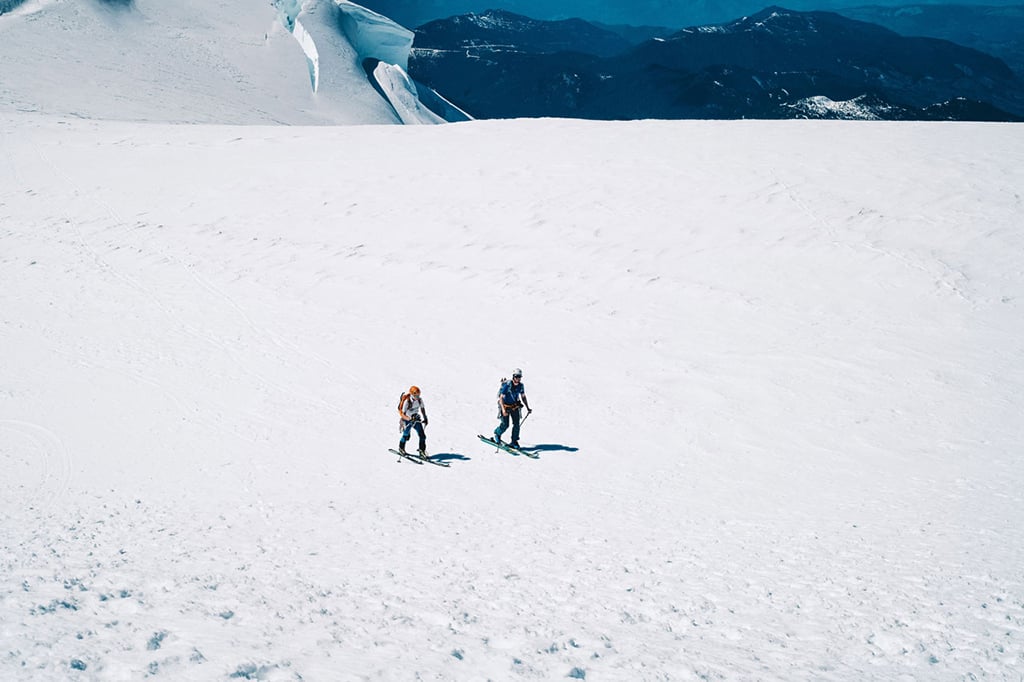
8. Snow Anchors
Experts recommend carrying one to two dedicated snow anchors per person. The MSR Picket has long been a trusted snow anchor of mountaineers around the world. It has an affixed cable to increase efficiency of an anchor setup, and was developed with feedback from the AMGA (American Mountain Guides Association). Like your ice axe and other safety and rescue equipment, properly applying your snow anchor takes professional training. Before heading out, ensure you have the skills to use your equipment in real conditions and terrain.
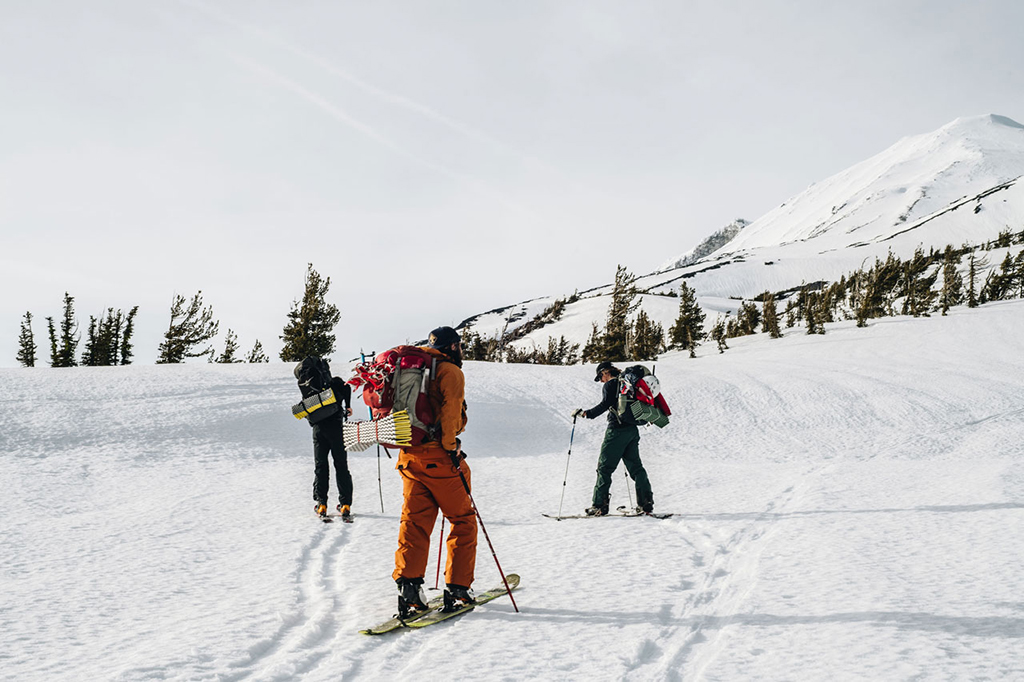
3 Tips to Get you Started
1. Read the book Freedom of the Hills
This is the book for mountaineers, experts and beginners alike: Freedom of the Hills is written for climbers, by climbers. It’s critical for learning all things mountaineering including knots, gear, route-finding, rope skills and so much more. If you want to get into mountaineering, this should be one of your first purchases. Many introductory and expert classes utilize this resource as the course textbook.
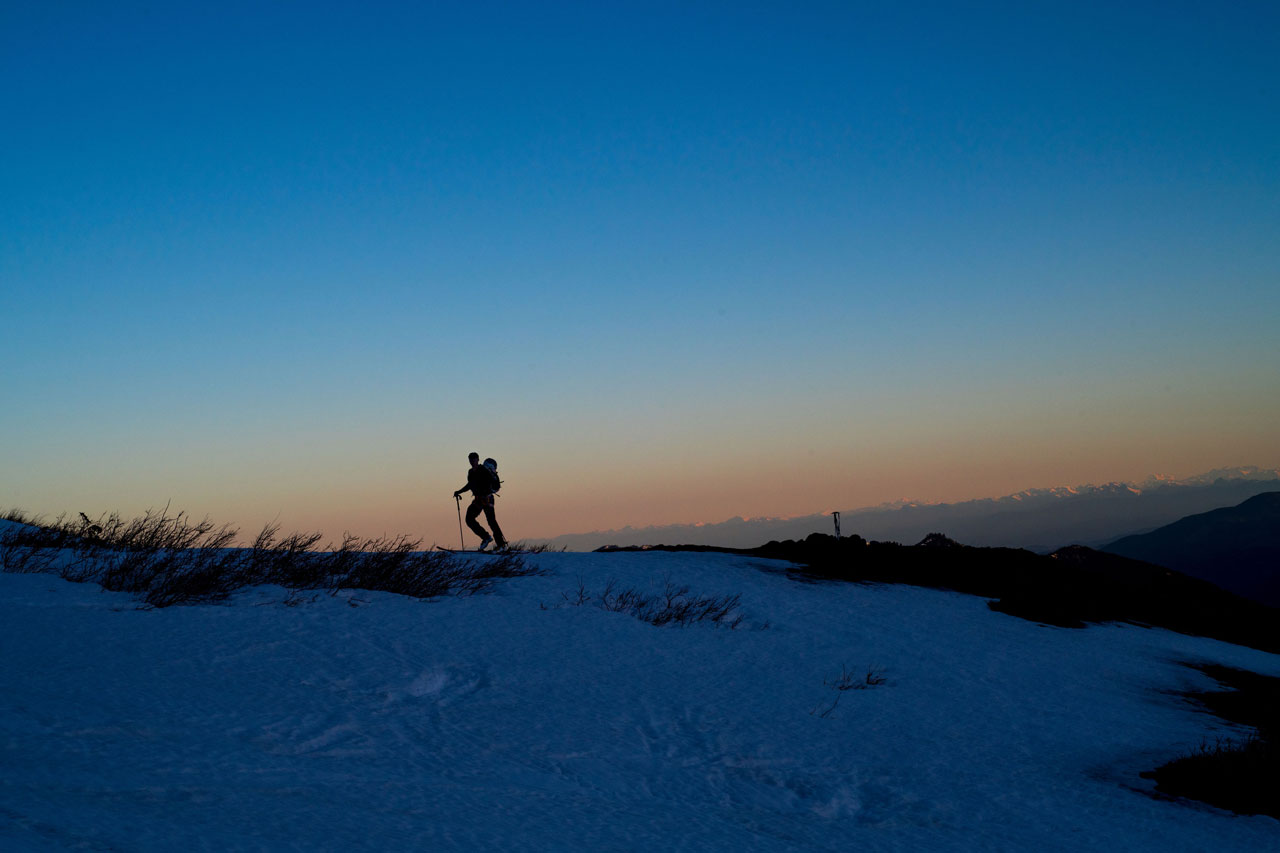
2. Take a Course
The best, fastest and safest way to gain the knowledge you need is to take a class from a reputable institution and learn—in the field—from professional experts. Many organizations, like Seattle’s Mountaineers, offer courses of varying lengths that combine classroom and field instruction. Targeted classes focus on specific skills (e.g., crevasse rescue), while summer-long programs provide the entire array of skills needed to have you traveling on your own.
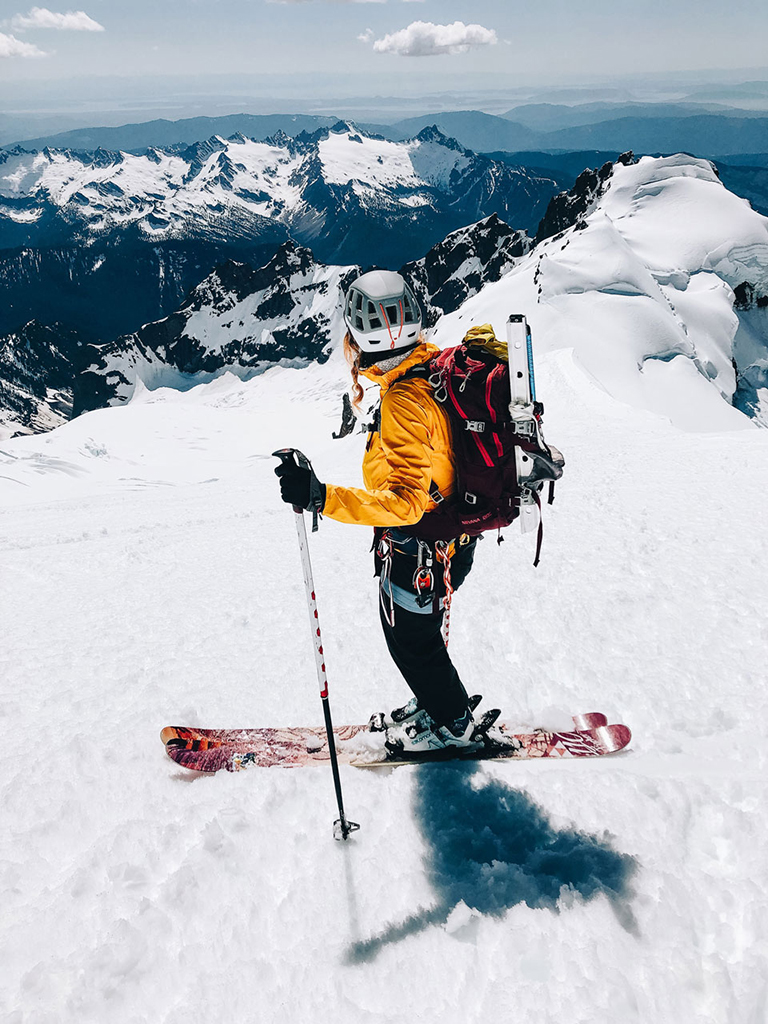
3. Practice, Practice, Practice
Just like any new technical hobby, practice makes perfect. In the backcountry, your skills—avalanche and crevasse rescue—must become second nature. It’s also critical to know your gear inside and out.
Mentorship and professional courses are great ways to connect with a community of like-minded adventurers and to learn properly. Then, it’s up to you to choose objectives that are realistic within your experience and skill level—knowing you have a lifetime of ski mountaineering ahead of you.
Story and photos by Sammy Spence
